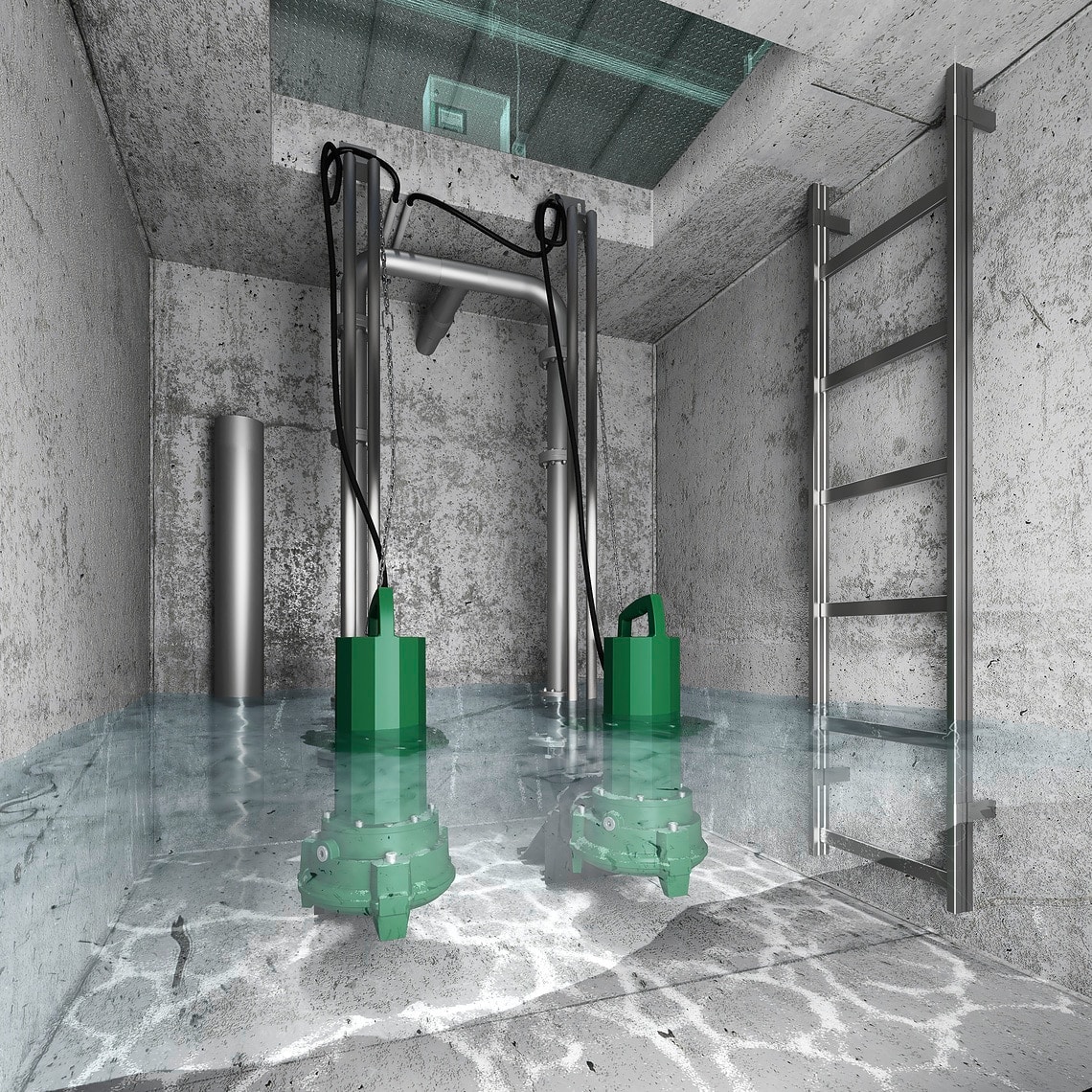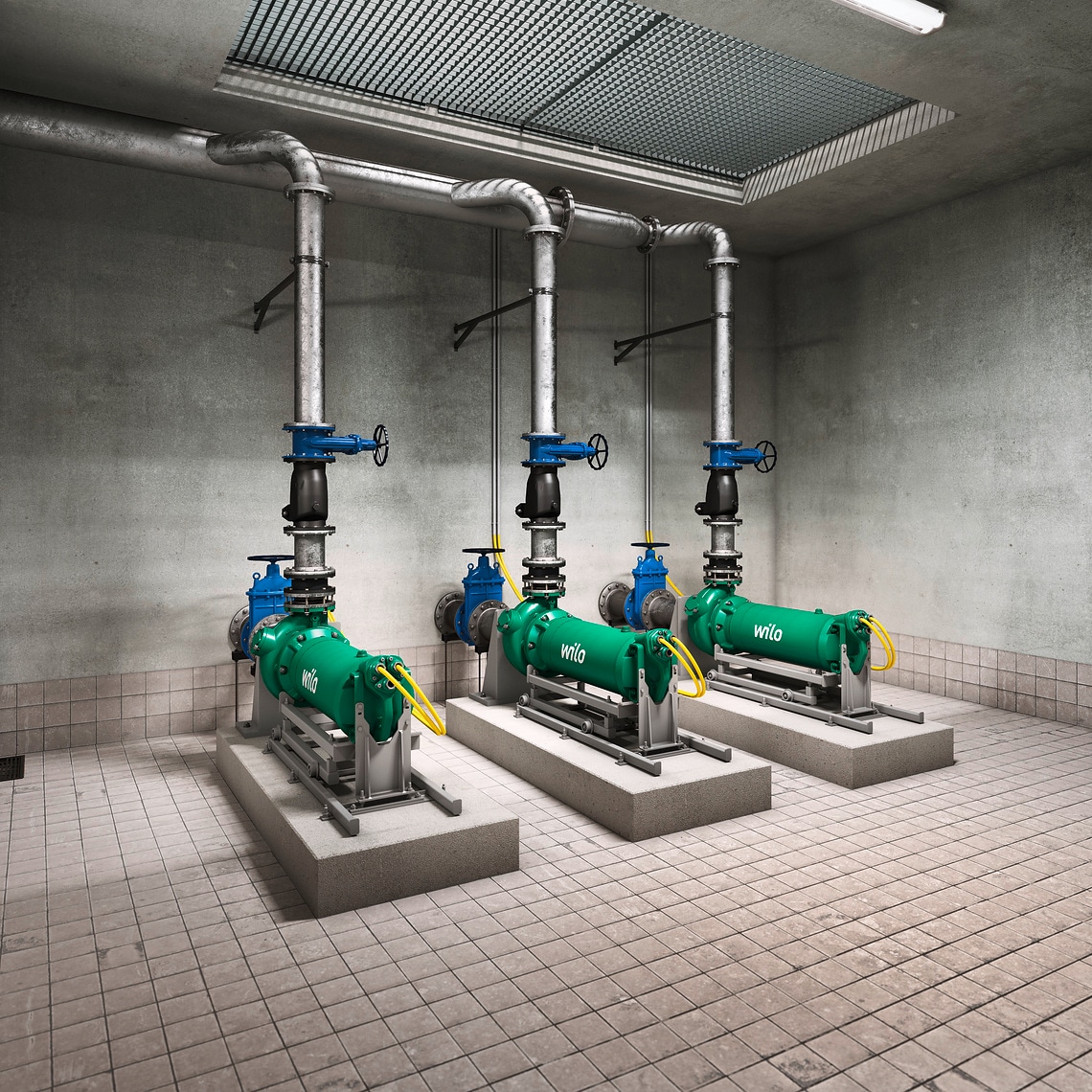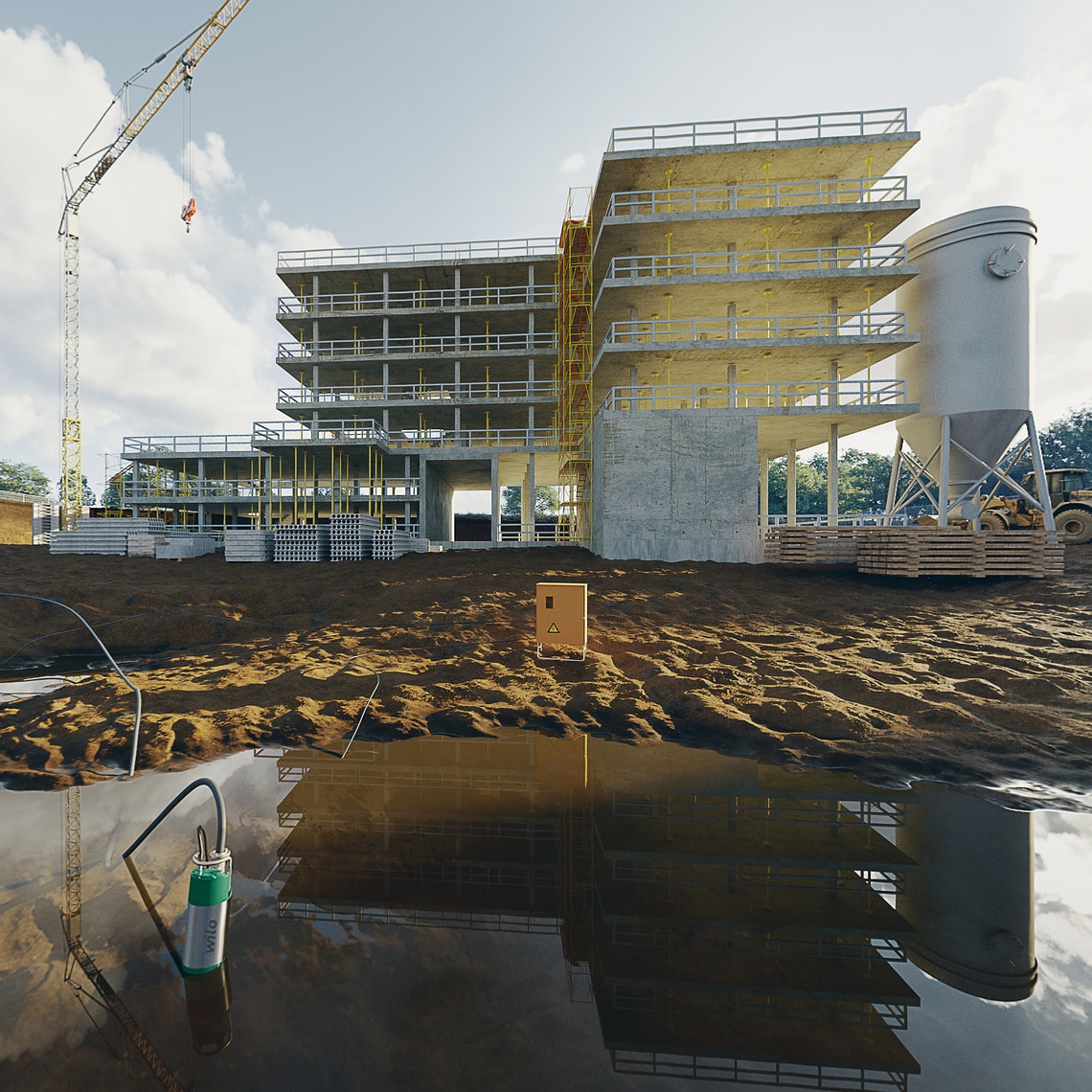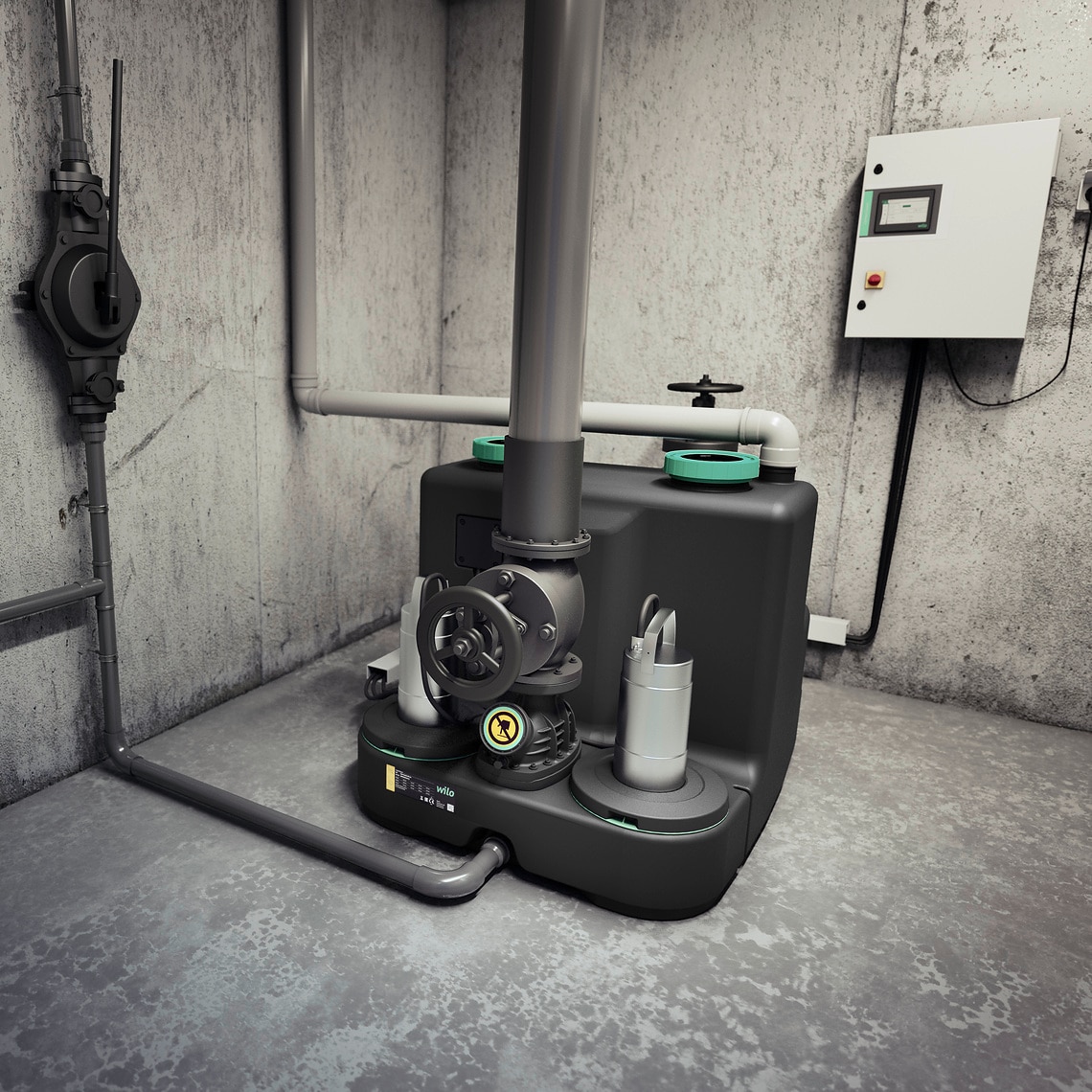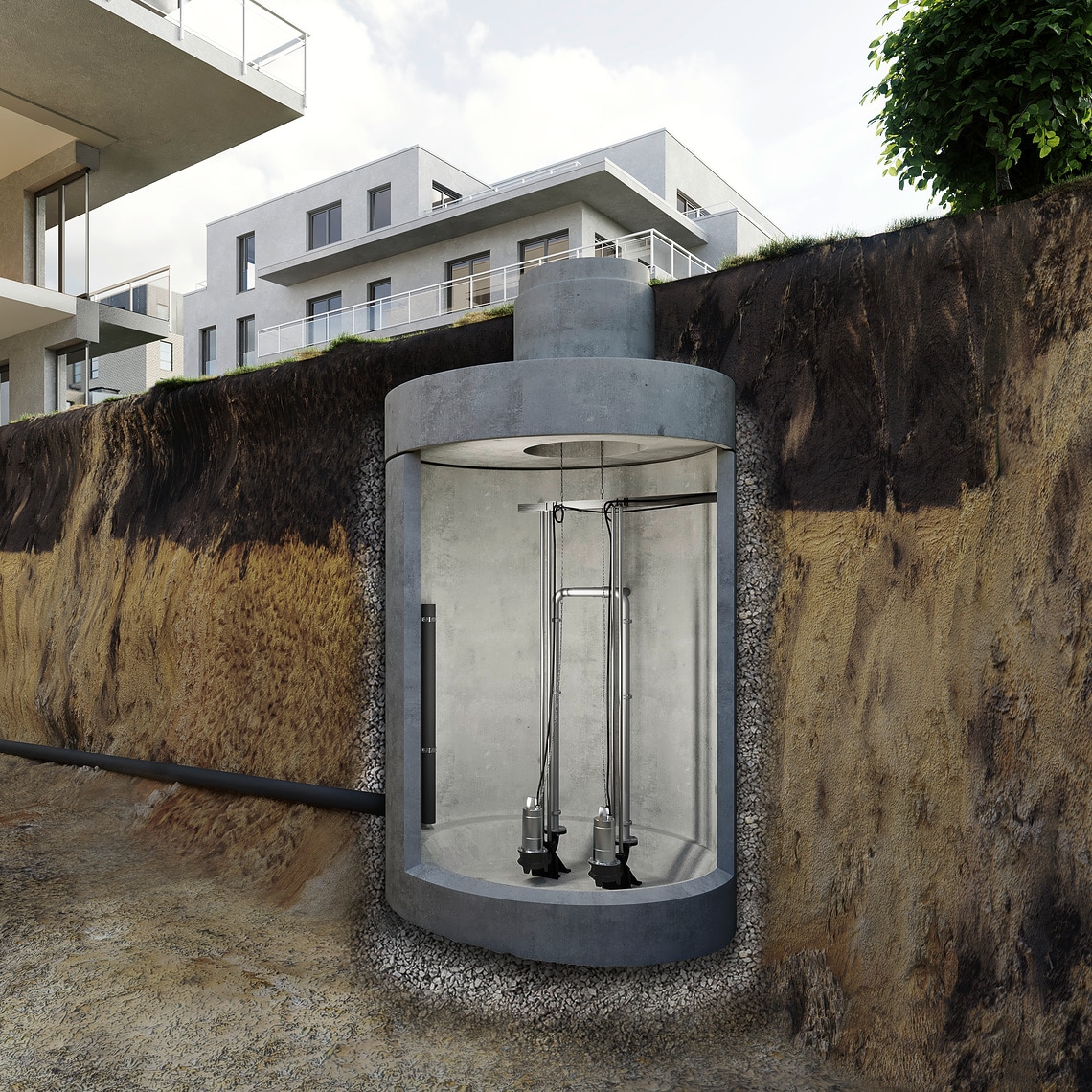Types of sewage pumps
Whether in the basement of a hotel, an industrial plant, an office building or in your own home – they work invisibly and reliably everywhere, so we hardly give them a second thought: Sewage pumps. Nevertheless, sewage pumps, or wastewater pumps and faecal pumps, are essential for ensuring that sewage is removed safely, hygienically and energy-efficiently in every situation. They are also perfectly tailored to your application. Here is an overview of the most important types of sewage pumps and their benefits.
Sewage pumps in wet well installation, stationary
Wet well installation is mainly used for larger submersible pumps in sewage pumping stations, sewage collection pumping stations or also in water treatment systems. Wet well installation means that pumps can be operated at least partially or also completely (submersible pumps) under water. The sewage pumps can be used submerged in continuous operation and non-immersed in short-time duty.
Here is a selection of wet-installed Wilo sewage pumps:
Wilo-Rexa BLOCWilo-Rexa SOLID-QWilo-EMUport CORESewage pumps in dry well installation, stationary
Sewage pumps (also called centrifugal pumps) are installed in a dry room and the submersible pumps are not immersed in the sewage. The pump housing is not flooded.
Here is a selection of dry-installed Wilo sewage pumps:
Wilo-Rexa BLOCWilo-Rexa SOLID-QWilo-EMUport COREPortable sewage pumps for dry well installation
These pumps can easily be carried to their intended site. These mobile pumps are immediately ready for use, especially for dewatering excavations or for emergency watering during flood control.
Here is a selection of portable Wilo sewage pumps:
Wilo-Padus PROLifting units
If the sewage from a building cannot be transported away to the central sewage pipe with a sufficient gradient, lifting units must be used. Lifting units are sewage pumps that discharge the sewage that accumulates below the backflow level in a backflow-resistant manner or pump it to a higher level.
A reliable sewage lifting unit is therefore indispensable for the backwater-resistant discharge of all types of sewage.
Lifting units from Wilo
Wilo sewage lifting units are your ideal solution for the safe and clean disposal of wastewater and sewage below the sewer level. In addition, all of our lifting units for pumping faecal-free sewage comply with the requirements of DIN EN-2 12050-2. We also offer faecal lifting units in accordance with EN-1 12050-1 for pumping sewage containing faeces.
Here is a selection of Wilo lifting units:
Detached and semi-detached housesFor commercial propertiesFor municipal applicationsSewage pumps with macerator
Sewage pumps with macerators are used to simultaneously shred solids and pump out sewage. They are primarily used for the disposal of sewage with a high solids content - mostly in pressure drainage. The pump shreds the solids in the sewage so that the pump or other pumps in the system will not clog and the sewage can be transported without any problems.
Are you looking for a faecal pump with macerator tailor-made for your requirements?
Use the following links. The overview page shows you the suitable fields of application for grinder pumps and the respective series of Wilo pumps that are suitable for you.
read moreFAQ – frequently asked questions
What should you consider when choosing your sewage pump?
In general, there are a few parameters to consider when selecting and operating a sewage pump. Here are the most relevant ones.
Installation types
Submersible motor technology, which includes sewage pumps, has different installation types. These depend primarily on the application. Basically, there are three main types of set-ups:
- Wet well installation, stationary
- Wet well installation, portable
- Dry well installation, stationary
Energy efficiency
Choose sewage pumps with motors of a higher efficiency class, such as IE4 or IE5. These motors have a higher efficiency and can thus save energy costs. This also gives you a quick return on investment (ROI) and the potentially higher purchase costs pay off several times over the life cycle of the pump through the energy cost savings. In addition, sewage pumps with a high efficiency class reduce CO2 emissions and contribute to sustainability.
Condition of the sewage
Another selection criterion is the condition of the sewage. Depending on the substances contained in the sewage, this should be taken into account in selecting the materials for the components to prevent damage in the long term.
read moreCoating of the components
If the sewage contains aggressive and or abrasive substances (e.g. high sand content in the pumped fluid or seawater), it is advisable to select a sewage pump with coatings for the pump housing and impeller. The Ceram coating from Wilo, for example, offers excellent durability and longevity.
read moreMaintenance costs
Last but not least, especially in commercial, industrial and municipal environments, you should consider the costs for maintenance and repair, as well as servicing, of the pump. They should be included in your overall calculations in addition to purchase costs and energy savings.
What quality advantages do Wilo sewage lifting units offer you?
How can Wilo sewage lifting units be installed?
How do you determine if your sewage lifting unit is running smoothly?
